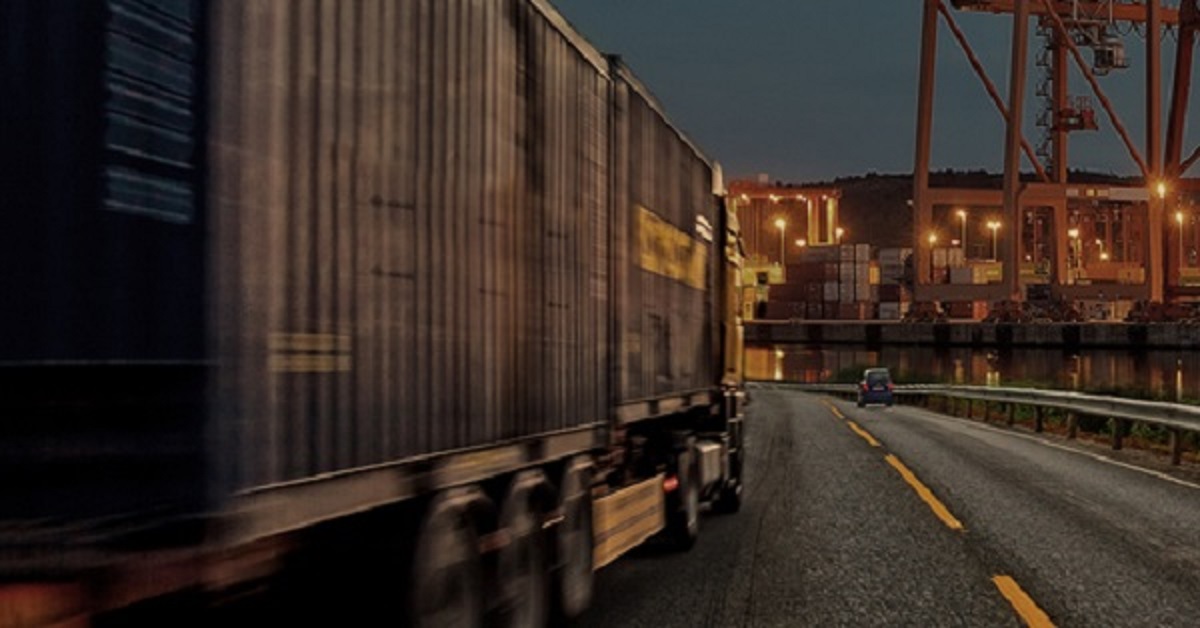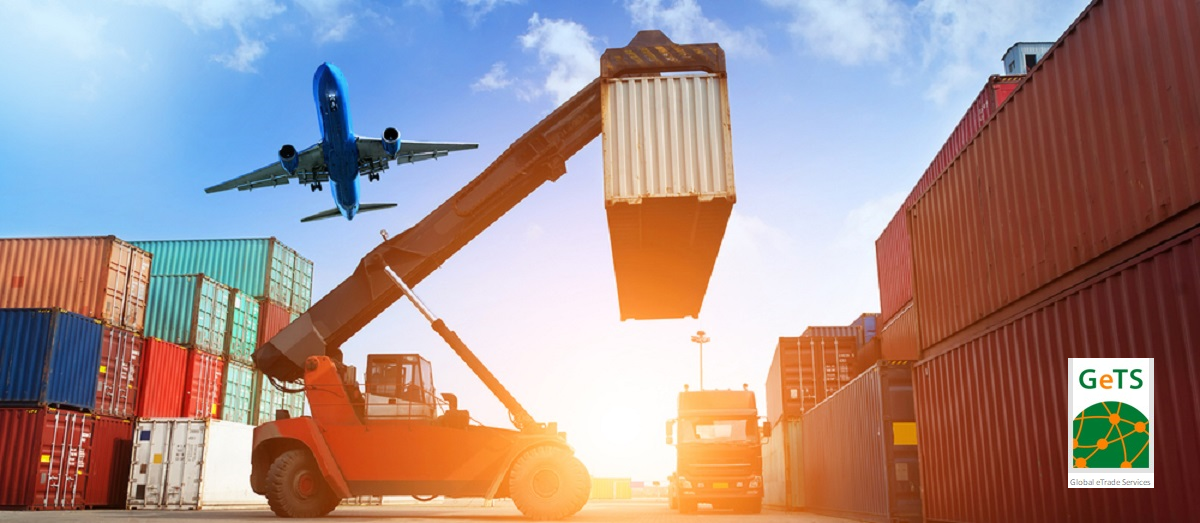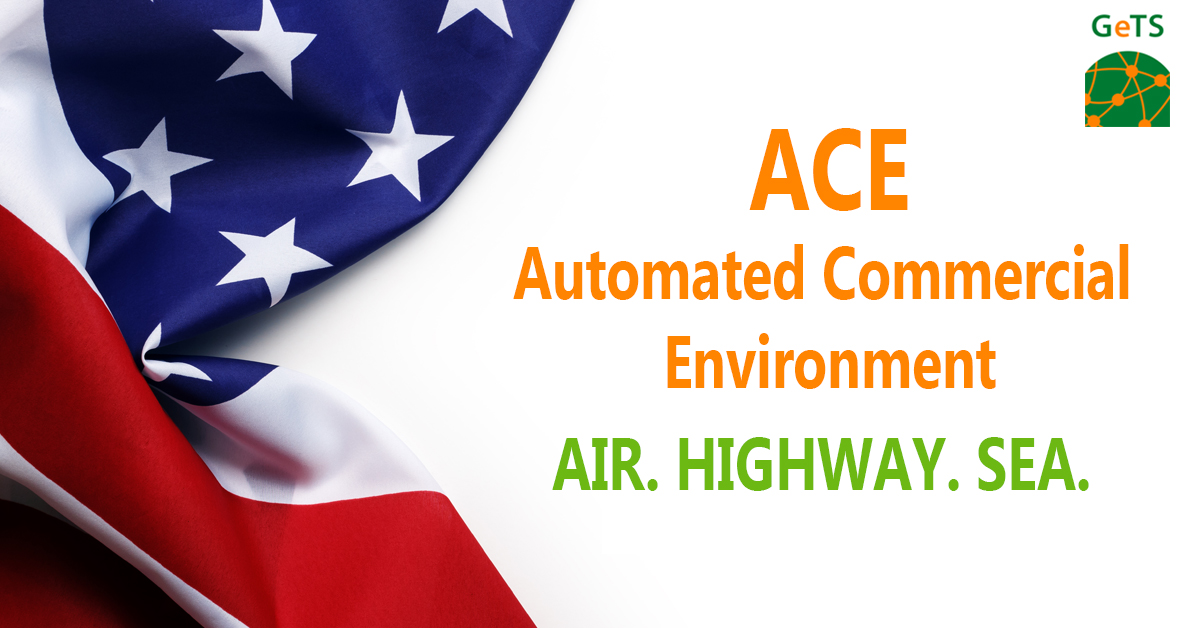Job Scam Alert:
This is to notify you that we have been alerted of job scams misusing the name of Global eTrade Services (GeTS). We would like to emphasize that there is no active, ongoing recruitment under the brand name of GeTS as we now operate under our parent company, CrimsonLogic. Please read the full disclaimer here.
- 15 Mar 2018
- USA
- USA
- ACE
- ACE eManifest
- US eManifest
- USA eManifest
- Automated Commercial Environment
- ACE Ocean
- Trade
- United States Customs and Border Protection
Technology and logistics service providers offer ACE Section 321 services for highway, air and ocean modes of transport to help traders streamline customs processing and cargo release. ACE Section 321 services greatly facilitate the movement of low-value goods into the United States.
U.S. TRADE AND E-COMMERCE

Data from the U.S. Census Bureau show that e-commerce sales in America have been increasing over the past decade from 2.5 percent in the first quarter of 2006 to 8.5 percent in the first quarter of 2016. The rise of e-commerce is mainly driven by growing online payment choices and the use of mobile devices for online purchases.
The great demand for U.S. products and services from outside the U.S. is another driver. Non-U.S. customers are finding new ways to access American products. However, the experience of cross border e-commerce businesses and customers differs greatly from those in the U.S. The unique needs of these parties are being met by companies and service providers that improve cross-border e-commerce efficiency.
IT companies, third party logistics providers (3PLs), fulfilment centers, payment processing firms, and e-commerce security providers are some important players in cross-border e-commerce facilitation. Some retailers partner with large shippers and freight forwarders to handle their packages, while others outsource services to third party IT and logistics firms. These services range from customs processing to fraud protection.
Trade Partners
U.S. manufacturers rely heavily on global suppliers, particularly from China (78 percent of total imports), Mexico (20.3 percent) and Canada (13.7 percent). Conversely, the U.S. exports products and services to these top three trading partners, with Canada having an 18.5 percent share of total exports, followed by Mexico at 15.7 percent, and China at 7.8 percent (U.S. Census Bureau data from August 2017).
In 2011, more than $1 billion in goods crossed the U.S.-Mexico border every day. Today, U.S. sales to Mexico continue to be larger than sales to China, with more than twenty states counting Mexico as their number 1 or number 2 export market.

Long before the 1994 North American Free Trade Agreement (NAFTA) came into effect, many ports of entry between the U.S. and Mexico were built to facilitate the movement of people, goods and services. However, border security has dominated policy following the events of 9/11. Some businesses groups in Mexico say one of the biggest challenges for businesses today is delays at the border, prompting analysts to recommend more public-private partnerships to leverage logistics and financial strengths.
Meanwhile, Canada remains a top trading partner of the U.S. As of June 2017, Canada accounts for 15.3 percent of total trade, with $139.9 billion worth of goods exported to the country and 150.4 billion imported. More than $2 billion in goods and services are exchanged between the two countries each day, supporting millions of jobs in each country.
While this relationship fosters strong trade through reduced barriers, navigating changing customs regulations and compliance issues require expertise. Traders must comply with rules, such as proper classification of goods and pre-arrival transmission of cargo information to customs, to ensure smooth cross-border trade.
SECTION 321 INFORMAL ENTRY
Section 321 is a type of U.S. shipment that allows for the release at shipments valued at $800 or less. Section 321 shipments are free of duty and tax and covers eligible cargo transported by highway, rail, air and ocean carriers. A shipment is eligible for a Section 321 release if the goods do not exceed $800 in value, are not one of several lots under a single order or contract, and are imported into the U.S. by one person per day.
Since March 10, 2016, the de minimis value of non-dutiable goods has been increased from $200 to $800 to make cross-border trade faster, cheaper and more efficient. However, commodities regulated by certain agencies, regardless of value, may need formal entry and examination.
Section 321 shipments do not require an eManifest if the carrier is only transporting Section 321 cargo. If the carrier is transporting a mix of Section 321 shipments and other shipments that require an eManifest, all shipments must be manifested.

For companies that regularly transport large volumes of Section 321 shipments to the U.S., membership in the Fast and Secure Trade (FAST) program is one way to facilitate cargo clearance. FAST is a trusted shipper program for pre-approved low-risk shipments entering the U.S. from Canada and Mexico by truck. At the border, FAST expedites processing of highway carriers who have completed background checks and met eligibility requirements. FAST membership also requires every link in the supply chain (from importer to driver) to be certified under the Customs-Trade Partnership Against Terrorism (C-TPAT) program.
Another way to facilitate cargo clearance for Section 321 shipments is for importers, agents or businesses to work with a third-party IT provider or logistics expert. One of the biggest challenges for importers was the recent mandatory transition to CBP’s Automated Commercial Environment (ACE). Because of shorter transit times to the U.S. border, this can be a bigger issue for highway carriers than for ocean or air carriers.
The transition to ACE significantly increases the amount of data required to be submitted to CBP by importers, carriers, freight forwarders and agents in all modes of transport. Submission deadlines also put pressure on traders to simplify customs processing and boost compliance. Some businesses are now doing twice the work in the same amount of time, highlighting the importance of proper planning, communication among parties, processes, and technology.
ACE SECTION 321 SERVICES FOR HIGHWAY, AIR AND OCEAN: GETS SOLUTIONS

To help trade participants meet these challenges, CBP-approved service provider Global eTrade Services(GeTS) has developed comprehensive ACE Section 321 services for highway, air and ocean. These services include ACE eManifest for Highway, Air and Ocean carriers, ISF 10+2, FDA PN, and ACE ABI. Most traders move both low-value and high-value shipments across the border, and GeTS solutions help improve communication and coordination among parties to meet submission timeframes and data requirements for all shipment types.
GeTS services benefits:
FAST submission.
Bulk upload and seamless integration features allow filers to pull stored data, prepare electronic documents and submit them to CBP within minutes.
SAVE time.
With template support, filers need to enter data only once to report Section 321 shipments. Templates save time and reduce the risk of errors due to repetitive data entry. Templates can be saved and edited to reflect changes.
REDUCE costs.
GeTS ACE Section 321 services are ideal for any business that wish to reduce costs while improving customs compliance. GeTS solutions are available in a variety of pricing plans and connectivity options: WEB-based self-filing, seamless INTEGRATION with in-house systems, or third-party filing (“FAX2US”)—GeTS will report Section 321 and other shipments to CBP on your behalf and send you status notifications. “FAX2US” Savings: Pay as low as $7 with GeTS instead of paying around $35 with the broker or competitor.
Regardless of business type or size, you can find a GeTS solution to meet your needs. GeTS has a special offer for subscribers handling high-volume shipments. To learn more visit GeTS Section 321 page or contact us today to receive your special offer!
Related Pages:
ACE eManifest Requirements for U.S. (CBP)
ACE (Automated Commercial Environment)
Benefits that Enterprises Gain from Automated Commercial Environment US
What is SW - Single Window US?
Benefits of Using USA Single Window
Truck Section 321 eManifest Requirements from U.S. CBP
